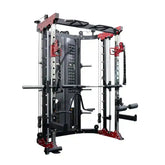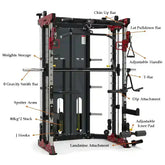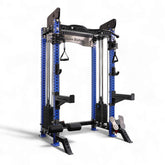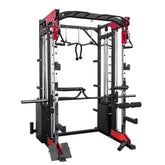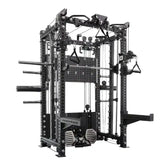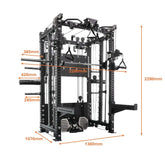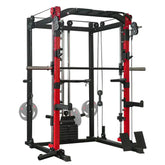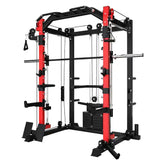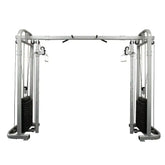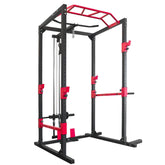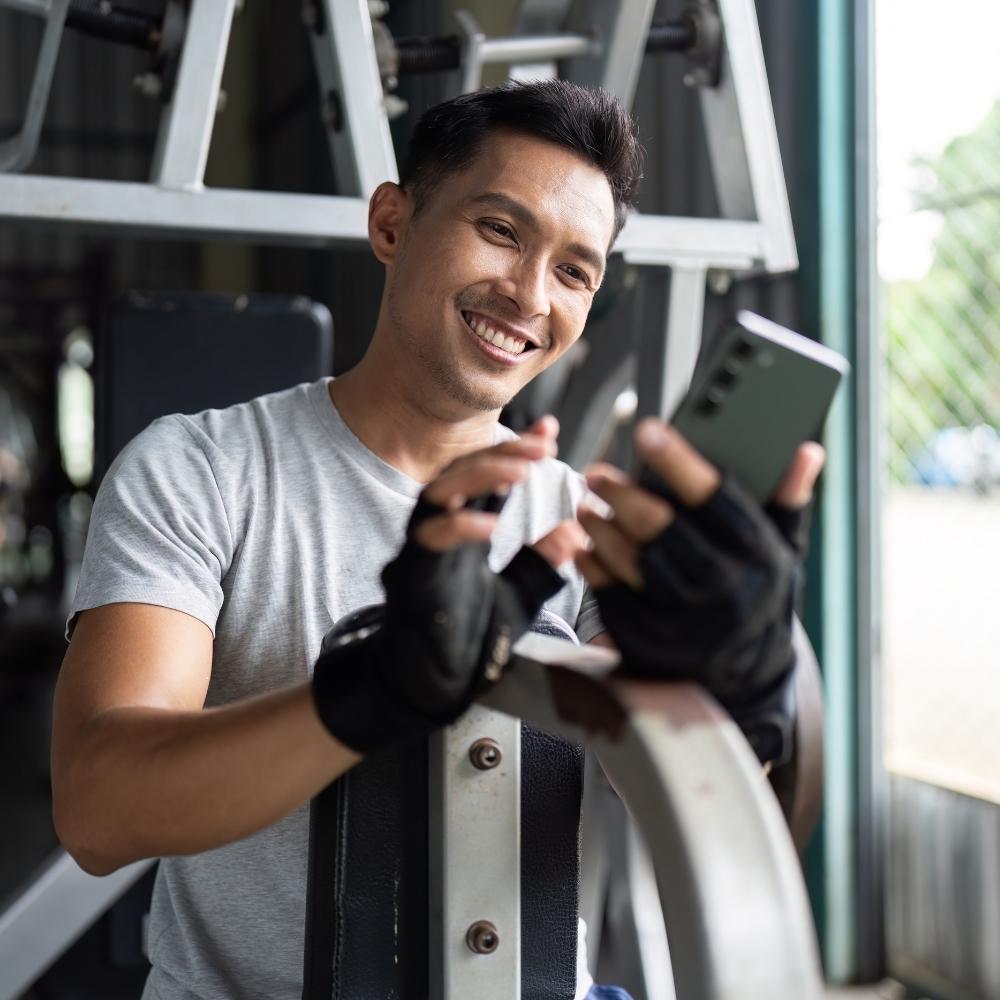Strengthen Your Core and Improve Flexibility with a Foldable Pilates Reformer
The foldable Pilates reformer strengthens your core, improves flexibility, and enhances total-body control — all from a compact, space-efficient design that fits seamlessly into any home gym. Pair your reformer sessions with mindful nutrition and mobility work for long-term balance, recovery, and posture improvement.
Build core strength and flexibility with a foldable Pilates reformer — compact, effective, and perfect for balance, mobility, and recovery.
Why Strength Athletes Need Pilates (Yes, Really)
When I was competing, I used to think Pilates was “just stretching.” I couldn’t have been more wrong.

After more than a decade of training and coaching, I’ve learned that core strength and mobility are the foundation of every great lift — whether you’re squatting double your bodyweight or refining your form on a cable machine.
That’s why I use the foldable Pilates reformer not only with my general fitness clients but also with strength athletes and bodybuilders. It’s one of the most effective tools for:
-
Strengthening your core and stabilisers
-
Improving flexibility and balance
-
Enhancing recovery between intense training sessions
And with its foldable design, it fits seamlessly into any home gym — efficient, compact, and built for long-term performance.
The Power of Controlled Movement
The Pilates reformer teaches one of the most underrated skills in fitness: control.
Each movement demands precise coordination between your breath, core, and stabilising muscles.
Unlike traditional weights, where gravity dictates resistance, the reformer uses spring resistance that maintains constant tension throughout the entire range of motion. This consistency builds strength, balance, and awareness in every rep.
Training on a reformer improves:
-
Spinal alignment and posture
-
Joint stability and control
-
Mind-muscle connection
-
Muscular endurance and precision
As a bodybuilder turned coach, I now use reformer work to complement strength training — it builds the foundation that supports every lift and movement pattern that follows.
How to Use the Foldable Pilates Reformer for Core Strength
Your core is more than just your abs — it’s the entire trunk that supports movement, stabilises your spine, and transfers power through every lift and stretch.
Here’s how I integrate reformer-based movements to build a stronger, more stable midsection:
1. Footwork Series
Focus: Core, Glutes, Hamstrings
-
Lie on the carriage with your feet on the foot bar.
-
Push through your heels while engaging your abs to control each phase.
-
Maintain steady control on the return — this is where your core activates most.
2. Long Stretch
Focus: Core Stability and Shoulder Strength
-
Begin in a plank position on the reformer.
-
Glide the carriage back slowly while maintaining a tight, braced core.
-
Pull the carriage forward using your abdominals, not your shoulders.
Coach’s Tip: Think “tight and tall” — a strong core protects your spine and sharpens every movement.
3. Knee Stretch Series
Focus: Lower Abs and Mobility
-
Kneel on the carriage with hands on the foot bar.
-
Push your legs back, then pull the carriage forward using your lower abs.
-
Sync your movement with controlled breathing to build rhythm and flow.
This sequence strengthens the lower abdominals while improving hip mobility and lower-back flexibility — key pillars of balanced, functional core strength.
Building Flexibility and Strength — Together
Flexibility without strength can lead to instability, while strength without flexibility limits mobility. The Pilates reformer bridges that gap through active stretching — strengthening muscles as they lengthen.

I’ve used this method to help clients:
-
Improve hip mobility for deeper squats
-
Enhance shoulder range for stronger presses
-
Recover from tight hamstrings and lower-back tension
Unlike static stretching, reformer training keeps your muscles engaged through the full range of motion, reinforcing balance and control with every rep.
This blend of strength and flexibility prevents injuries, improves posture, and makes both training and daily movement more efficient.
Recovery: The Hidden Power of Reformer Training
After years of heavy lifting, I learned that recovery isn’t about doing nothing — it’s about active restoration. The foldable Pilates reformer provides a low-impact way to recover while still training.
Its spring-based resistance lets you move freely, stimulate circulation, and relieve tightness — ideal for athletes and home lifters alike.
I often include reformer sessions after heavy leg days or high-volume training weeks to reset the body and nervous system.
Reformer work supports:
-
Improved circulation to reduce muscle soreness
-
Enhanced lymphatic flow for natural recovery
-
Mind-body connection, helping manage stress and improve focus
Even on rest days, reformer training keeps you progressing — restoring strength, mobility, and movement quality.
Nutrition for Core Strength and Recovery
A strong core doesn’t just come from training — it comes from fueling the muscles that stabilise and support your movement.
Here’s what I recommend to my athletes during mobility and core-focused training phases:
1. Focus on Anti-Inflammatory Foods
Incorporate foods such as salmon, chia seeds, olive oil, and leafy greens to support joint health and help reduce post-session soreness.
2. Eat Enough Protein for Repair
Even on lighter training days, aim for around 1.6 g of protein per kilogram of body weight to maintain muscle and speed up recovery. Include sources like eggs, lean meats, tofu, or Greek yoghurt.
3. Add Hydration and Electrolytes
Mobility work demands hydration for joint lubrication and muscle elasticity. Add a pinch of sea salt or an electrolyte mix to your water during longer sessions or warmer weather.
Coach’s Insight: Strength isn’t just about pushing limits — it’s about recovering smarter.
The way you eat, hydrate, and rest directly affects how your body moves, adapts, and heals.
How to Integrate the Reformer into Your Training
You don’t have to give up your dumbbell set or squat rack to benefit from Pilates.
In fact, pairing reformer sessions with traditional strength training creates the perfect balance between tension and control.
Here’s how I typically program it for clients building both strength and mobility:
|
Day |
Focus |
Example Equipment |
|
Monday |
Strength |
Squat Rack + Dumbbells |
|
Wednesday |
Core & Mobility |
Foldable Pilates Reformer |
|
Friday |
Hypertrophy |
Cable Machine + Dumbbells |
|
Sunday |
Active Recovery |
Light Reformer Work + Stretching |
This rotation keeps the nervous system fresh, improves flexibility, and prevents burnout — while ensuring every muscle group gets the right balance of load and recovery.
Setting Up Your Foldable Pilates Reformer at Home
One of the best features of a foldable Pilates reformer is its convenience. It’s perfect for apartments, garages, or multi-purpose training spaces, making professional-quality Pilates accessible anywhere.
Quick Setup Tips:
-
Flat Surface: Set your reformer on a stable, non-slip floor for maximum control.
-
Space Clearance: Leave 1–2 meters of open space around it to allow a full range of motion and safe transitions.
-
Spring Settings: Begin with lighter resistance and gradually increase as you gain strength and control.
-
Storage: When you’re finished, fold it vertically or horizontally — it easily fits under most beds or upright against a wall for efficient storage.
If you’re pairing your reformer with other home gym essentials like a dumbbell set or cable machine, keep your setup versatile and organised for smooth, uninterrupted training sessions.
Final Thoughts from the Coach
Strength training builds your power, but mobility and control keep you lifting longer. The foldable Pilates reformer bridges that gap — helping you stay strong, flexible, and resilient for years to come.
I’ve seen top athletes use reformer sessions to reset posture, activate their core, and move more efficiently than ever before. And the best part? You can do it all from home.
Start checking your equipment here or contact us now.
Frequently Asked Questions
Can I build strength using a Pilates reformer?
Absolutely. The spring resistance on a reformer challenges both large muscle groups and stabilisers, helping you develop lean, functional strength while improving control and balance.
Is a reformer suitable for athletes or bodybuilders?
Yes. The foldable Pilates reformer enhances mobility, recovery, and body awareness, making it an excellent complement to traditional strength or bodybuilding programs. It helps improve range of motion and reduces stiffness from heavy lifting.
How much space do I need for a foldable reformer?
Most foldable reformer models are designed for compact home gyms — they fold easily and can be stored under a bed or upright against a wall when not in use.
How often should I use the reformer?
For best results, aim for 2–3 sessions per week. This frequency helps improve flexibility, core stability, and overall movement quality while supporting recovery between heavier strength sessions.

